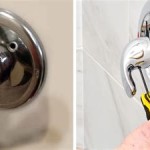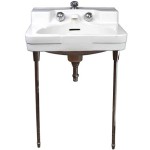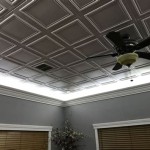How To Hang A Bathroom Cabinet On Plasterboard Wall
Hanging a bathroom cabinet on a plasterboard wall requires careful planning and execution to ensure a secure and lasting installation. Plasterboard, while convenient, does not offer the same inherent strength as solid walls, necessitating specific techniques to support the weight of the cabinet.
Essential Tools and Materials
Gathering the necessary tools and materials beforehand streamlines the installation process. Having everything readily available prevents interruptions and ensures a smooth workflow.
- Stud Finder: Locating wall studs is crucial for providing maximum support.
- Pencil: Marking the desired location and stud positions is essential for accurate placement.
- Spirit Level: Ensuring the cabinet hangs level is critical for both aesthetics and functionality.
- Drill with appropriate drill bits: Different drill bits are needed for pilot holes in the studs and for plasterboard.
- Screwdriver: Choose the correct type and size to match the chosen screws.
- Appropriate Screws: Use screws specifically designed for fixing into wall studs and plasterboard. Consider the cabinet's weight when selecting screw length and gauge.
- Wall Plugs (if necessary): If fixing solely to plasterboard, suitable wall plugs are essential.
- Measuring Tape: Accurate measurements are crucial for correct positioning and alignment.
- Safety Glasses: Eye protection is vital during drilling and screwing.
Locating Wall Studs
Identifying the location of wall studs is the first critical step. Studs provide the strongest anchoring points for the cabinet. Accurate stud location ensures the cabinet is securely mounted and can bear the intended weight.
- Use a stud finder to locate the center of the studs behind the plasterboard.
- Mark the stud locations with a pencil for future reference.
- Measure the distance between the studs to determine if they align with the cabinet's mounting points.
Marking the Cabinet Position
Accurate marking guarantees the cabinet is installed in the desired location and at the correct height. Precise measurements and level placement are crucial for achieving a professional finish.
- Measure the desired height for the bottom or top edge of the cabinet.
- Using the spirit level, draw a horizontal line across the wall at the measured height.
- Measure and mark the width of the cabinet on the horizontal line.
- Check the vertical alignment using the spirit level to ensure the cabinet will hang straight.
Drilling Pilot Holes
Drilling pilot holes prevents the wood from splitting and ensures accurate screw placement. This step is especially important when screwing directly into studs.
- Align the cabinet's mounting brackets with the marked lines and stud locations.
- Use a drill bit slightly smaller than the screw diameter to drill pilot holes through the cabinet's mounting brackets and into the marked stud locations.
- If fixing solely to plasterboard, drill pilot holes sized for the chosen wall plugs.
Installing Wall Plugs (If Necessary)
When studs do not align with the cabinet mounting points, wall plugs provide a secure anchor in the plasterboard. Selecting the appropriate type and size of wall plug is essential for ensuring the cabinet's stability.
- Insert the wall plugs into the pilot holes, ensuring they are flush with the wall surface.
- Gently tap the plugs if necessary to ensure a snug fit.
- Different types of wall plugs are suited to varying weights and plasterboard thicknesses; choose accordingly.
Fixing the Cabinet to the Wall
Careful attachment of the cabinet to the wall is the final step in the installation process. Ensuring the screws are driven straight and firmly secured guarantees the cabinet's stability.
- Align the cabinet with the drilled pilot holes and pre-installed wall plugs (if used).
- Carefully drive the screws through the mounting brackets and into the wall plugs or studs.
- Avoid overtightening the screws, which can damage the plasterboard or strip the screw heads.
- Use the spirit level to verify the cabinet remains level throughout the screwing process.
Final Checks
Once the cabinet is fixed, performing final checks ensures the installation is complete and the cabinet functions as intended.
- Open and close the cabinet doors to ensure they move freely and smoothly.
- Place items inside the cabinet to check its stability and weight-bearing capacity.
- Visually inspect the cabinet to ensure it is level and securely attached to the wall.

Solution Sunday Fixing Vanity Units To Plasterboard Walls Toggler Fixings

How To Install A Medicine Cabinet Inset Or Surface Mount Bob Vila

How To Fit A Wall Hung Cabinet Or Unit Victoriaplum Com

How To Hang A Bathroom Cabinet With Wickes

How To Hang A Bathroom Cabinet

How To Install A Bathroom Cabinet On Plasterboard Wall

How To Hang A Cabinet Do It Yourself Install

How To Hang Items On A Plasterboard Wall

How To Build A Built In Bath Cabinet Diy Family Handyman

How To Build A Built In Bath Cabinet Diy Family Handyman
Related Posts







